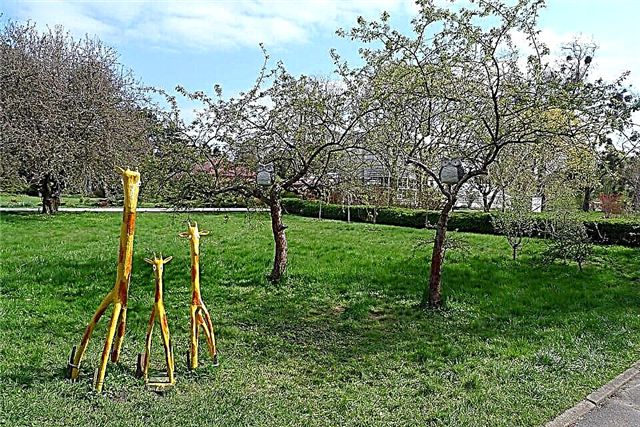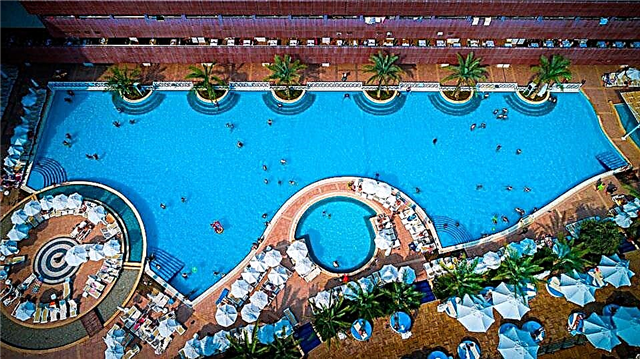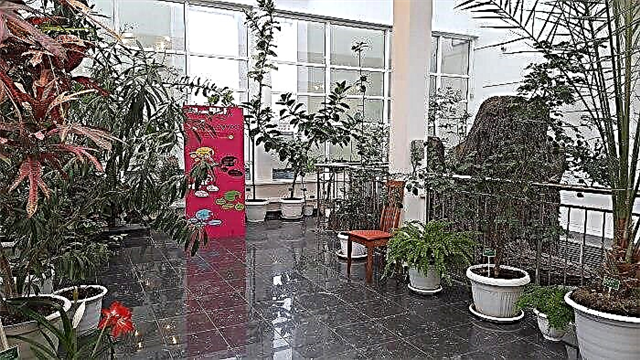We continue to review the places in the capital that will help families with children fill their leisure time. This time we will talk about the Darwin Museum, which is worth visiting for everyone who is not indifferent to the famous theory of evolution, loves history and has his own answer to the question of the origin of man. Looking ahead, we note that today the museum has been awarded the title of the largest natural science center throughout Europe.
History of origin
The official date of the emergence of the unusual complex is October 7, 1907. Almost all the exhibits that are part of the collection are devoted to the issues of evolution and tell about the desire of man to solve the main riddle of the origin of species on Earth. At the same time, this institution is not at all like the usual boring exhibition halls that we all have visited many times.



Each visitor, crossing the threshold of the museum, finds himself in some unique world, the atmosphere of which is filled with mystery, the alluring “smell” of the theory of natural selection and the struggle of different species for their “place in the sun”. The galleries of the exhibition not only boast an impressive array of unusual exhibits, but also allow visitors to familiarize themselves with rare books, the authors of which share their guesses and argue in favor of their theories of the origin of the rare species of living organisms that have ever inhabited our planet. There are also collections of remains of rare species that have become extinct long ago. And modern technologies allow you to instantly travel to the other end of the world or hear how rare animals exchange information with each other.
Schedule
The exhibition is open daily from 10 am to 6 pm. The days off are Monday and the last Friday of each month. On Thursday, visitors will be able to visit the exhibition halls from 13:00 to 21:00.


The cost of tickets for adult visitors is 250 rubles (entrance to the Main Hall) and 100 rubles (entrance to the exhibition complex). For young visitors, acquaintance with the unique collection will be cheaper. At the same time, the opportunity for free visits to the complex by some categories of citizens is also provided. Thus, schoolchildren, orphans and disabled people, war veterans, museum staff and military personnel will be able to get inside for free.
"Know yourself - know the world"
This unusual name hides a completely new center, which has expanded to the Darwin Museum. Just imagine: on a huge area of 200 square meters, almost the entire Universe fits. Here microorganisms and objects of a planetary scale are presented, and modern equipment samples allow not only to see microorganisms with our own eyes, but also to feel their presence. So, guests will be able to smell, hear the sounds of living Nature, and also learn a lot about themselves.



The beauty of the showroom does not end there. With the help of special virtual equipment, visitors will be able to look at the animal world from a bird's eye view, or through the eyes of any chosen animal, hear how the heart of the tiniest bird - a hummingbird - beats, compare them with the frequency of their own heartbeat, and even measure their strength with a real elephant! Moreover, with just one movement of the hand, the guests of the hall can be transported to any part of our planet, as well as feed the robots walking here.
The organizers of the exhibition decided to pay special attention to the young generation. For such guests in the educational center "Know yourself - know the world" will be offered to go through a fascinating quest, during which you will need to solve many interesting problems and find answers to numerous questions. In total, about 50 interactive complexes will be available to children.



In addition, schoolchildren will be able to take part in interactive programs, watch master classes and even become a permanent member of the biological circle. Well, very young visitors (up to 7 years old) will be able to frolic in plenty in a special children's corner. The guests will be entertained by multimedia elements: “singing” bumblebee, frog, unusual complexes and even a special digital planetarium.
Cinema halls and expositions
Of particular interest is the cinema, where you can immerse yourself in the prehistoric world and watch exciting documentaries and educational programs. In particular, the movie "Marine Dinosaurs 3D: A Journey into the Prehistoric World" takes viewers to the time when our planet was inhabited by dinosaurs. The film was created using 3D technologies and, in addition to exciting the minds of special effects, it sheds light on many secrets of that time. Dinosaurs and other prehistoric creatures look very realistic!



The multimedia exposition "Walk the path of evolution" is of considerable interest to visitors. The visitors of the museum are offered to take one of the most exciting walks along the winding path - to follow from the times of the emergence of the first microorganisms to the present day. Thus, even people far from science will be able to try on the role of a real researcher and scientist. Thanks to the bright backlighting, the walk will be memorable.
The Digital Planetarium is also worth a visit, where sessions of fascinating films with a cosmic and galactic bias take place. Children will be invited to go on a journey with the first cosmonauts, land on the moon, and conduct fascinating research.



In addition, you can visit interesting exhibitions that fill three floors of the building. So, on the ground floor there is an exhibition "The Diversity of Life on Earth", which introduces guests to the amazing variety of living organisms, about the main differences between the inhabitants of the ocean and land, forests and savannas, caves and mountains, etc.
The second floor is reserved for the expositions "Microevolution" and "Stages of Cognition of Living Nature". The first hall tells about evolutionary processes, what path of changes certain species of the animal world went through, as well as about the struggle of species for survival. The second exhibition complex acquaints visitors with the history of the formation of biology as a science.



Well, the third floor is reserved for the halls "Macroevolution" and "Zoogeography". The first hall allows you to learn about the origin of man, the stages of his evolution, and also introduces the life of the first representatives of the human race on the planet. Well, the halls of "Zoogeography" allow you to learn more about the geographical distribution of certain animal species. It is this hall that is recognized as the most colorful among the expositions of the Darwin Museum.











